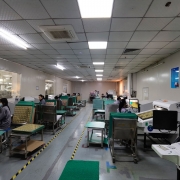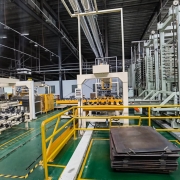Mikä on galvaanisen korroosion vaikutus piirilevyyn?
Mikä on galvaanisen korroosion vaikutus piirilevyyn?
If you’ve ever wondered what is the impact of galvanic corrosion to a PCB, you’re not alone. This type of corrosion causes neighboring traces to become contaminated by a solution or ionic liquid, and small slivers grow between the traces. These slivers can cause short circuits or even disable a functional block on the PCB. If the corrosion affects the power lines on the PCB, you could experience a whole device malfunction.
Examples of galvanic corrosion on a PCB
Galvanic corrosion is an electrochemical process whereby the surface of one metal reacts with the surface of another metal. This reaction takes place in the presence of an electrolyte, and it usually occurs between dissimilar metals. In primary cells, this process is exploited to create useful voltage.
The corrosion process begins when moisture, or ionic liquid, contacts an exposed metal part. Upon contact, metal oxides begin to grow and cause the surface to corrode. This process can also affect adjacent circuit boards, causing short circuits and deterioration of the entire board.
One way to minimize galvanic corrosion is to use corrosion inhibitors. These are effective at reducing galvanic potential, but require constant monitoring. They also increase the conductivity of water. So, it’s important to properly maintain the PCB when working with it.
Another method for preventing galvanic corrosion is to use antioxidant paste between copper and aluminum electrical connections. This paste consists of metal with a lower electro potential than copper. This will help to ensure that metals do not come into contact with each other and minimize the chance of galvanic corrosion.
Galvanic corrosion is often a result of dissimilar metals used in soldering joints. Because of this, it’s crucial to choose the right material for mating connectors. Materials with the same ionic potential are more likely to resist corrosion than those with dissimilar metals.
Process for reducing galvanic corrosion degree on a PCB
The degree of galvanic corrosion on a PCB board can be reduced in various ways. The first technique involves analyzing the network and finding the causes of galvanic corrosion, and the second technique involves increasing the area of the organic coating process (OSP) disk in the network.
The copper pads on a PCB are protected by a surface finish, but moisture can enter under the finish. Once inside, moisture reacts with the copper and starts a corrosion process. This process can then spread along the trace. In many cases, galvanic corrosion occurs due to contact between two dissimilar metals, such as copper on a PCB and the metal of a component. The presence of a corrosive electrolyte also increases the chance of galvanic corrosion.
Galvanic corrosion is a common problem in electronics, particularly in high-speed applications. It happens when two dissimilar metals are in contact with an electrolyte. When two dissimilar metals are in electrical contact, the more reactive metal atoms lose electrons and cause oxidation. This leads to a short circuit.
Keeping PCBs clean is critical to their longevity and ensure the longevity of the devices. The prevention of corrosion starts with keeping them dry and free of liquids. As a result, PCB manufacturers and designers must carefully protect their boards against moisture beading on exposed conductors.
Typical corrosion failure types in electronics
Typical galvanic corrosion failure types in electronic devices occur due to different types of processes. One of them is the formation of a water film on the PCBA, which can lead to leakage currents and a wrong output signal from the electronic device. Another type of corrosion failure is caused by a defect in the manufacturing process. This corrosion type often results in a short circuit in the switch.
The rate of corrosion depends on several factors, including temperature and the surrounding environment. The presence of moisture, dew, or condensation will accelerate the process. The presence of dust particles will also increase the corrosion rate because they retain moisture. Dust particles come from a variety of sources, including soil/sand, smoke, soot particles, and salts.
Stainless steel and zinc are examples of noble and active materials. The higher the relative difference between the two metals, the greater the amount of force that will be exerted during galvanic corrosion. A cathode with a large surface area will corrode at a high rate due to the high current.
Galvanic corrosion is a major concern in industrial design. Magnesium is a highly active structural metal. It is used in the aerospace and auto industries. The area ratio of the cathode and anode will also affect the amount of current produced by galvanic corrosion. Insulation spacers between two metals may also reduce the risk of galvanic corrosion by changing the distance between them.



